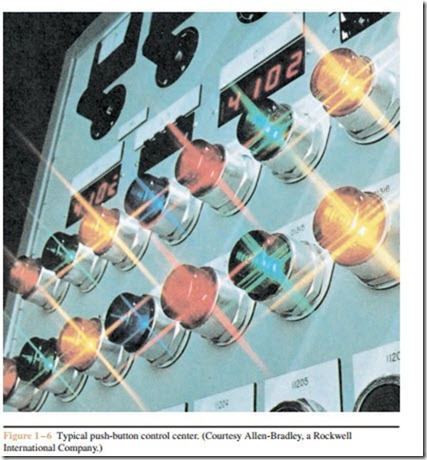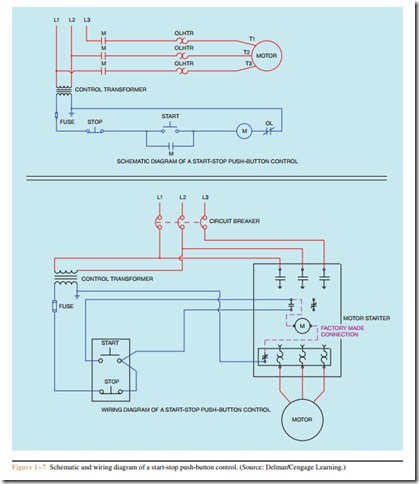Types of Control Systems
Motor control systems can be divided into three major types: manual, semiautomatic, and automatic. Manual controls are characterized by the fact that the operator must go to the location of the controller to initiate any change in the state of the control system. Manual controllers are generally very simple devices that connect the motor directly to the line. They may or may not
provide overload protection or low voltage release. Manual control may be accomplished by simply connecting a switch in series with a motor (Figure 1–1).
Semiautomatic control is characterized by the use of push buttons, limit switches, pressure switches, and other sensing devices to control the operation of a magnetic contactor or starter. The starter actually connects the motor to the line, and the push buttons and other pilot devices control the coil of the starter. This permits the actual control panel to be located away from the motor or starter. The operator must still initiate certain actions, such as starting and stopping, but does not have to go to the location of the motor or starter to perform the action. A typical control panel is shown in Figure 1–6. A schematic and wiring diagram of a start-stop push-button station is shown in Figure 1–7. A schematic diagram shows components in their electrical sequence without regard for physical location. A wiring diagram is basically a pictorial representation of the control components with connecting wires. Al- though the two circuits shown in Figure 1–7 look different, electrically they are the same.
Automatic control is very similar to semiautomatic control in that pilot sensing devices are employed to operate a magnetic contactor or starter that actually controls the motor. With automatic control, however, an operator does not have to initiate certain actions. Once the control conditions have been set, the system will continue to operate on its own. A good example of an automatic control system is the heating and cool- ing system found in many homes. Once the thermostat has been set to the desired temperature, the heating or cooling system operates without further attention from the home owner. The control circuit contains sensing devices that automatically shut the system down in the event of an unsafe condition such as motor overload, excessive current, no pilot light or ignition in gas heat- ing systems, and so on.

